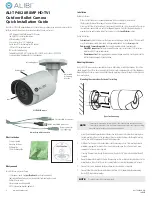
Introduction
Getting Ready
Taking Pictures
Playback
Set Up
GB-147
Viewing Still Images | Viewing Movies | [
o
] Viewing Images Automatically as a Slideshow (slideshow) | [
O
] Viewing Multiple Images | [INFORMATION] Viewing Image Information | [
J
]/[
I
] Erasing Unwanted
Images | [
U
] Protecting Images from Accidental Erasing (PROTECT) | [
p
] Adding Voice Messages to Still Images (POSTRECORDING) | [
V
] Resizing and Trimming Images (RESIZE) | [
W
] Rotating an Image |
[
T
] Using DPOF to specify print settings | [
G
] Printing by Connecting the Camera Directly to a Printer (PictBridge) | Connecting to a Windows PC |
Connecting to a Macintosh
NEXT
BACK
Contents (Top page) Detailed Contents
Index
Nomenclature
Menus and Settings
Troubleshooting
4
Press the POWER button
H
to turn the
camera on.
[PC MODE] is displayed on the camera's LCD monitor and you can
check the images stored on the camera's memory card from your
Macintosh and copy the images to your Macintosh.
5
An [untitled] disk icon appears on the desktop. Double-click
the icon to open the disk window.
* Displayed as [NO_NAME] in Mac OS 10.0 to 10.3.x.
6
Open the [xxxROBOX] folder or the [xxxRORSZ] resized
images folder in the DCIM folder and then select and double-
click the image file you want to view.
A
Important
When the camera is connected to a computer and you are viewing or copying
images, the card access LED flashes. Do not disconnect the USB cable or turn the
computer off while the card access LED is flashing.
B
Note
• When the camera is connected to the Macintosh, the self-timer LED lights.
• If you intend to use the camera in this way for a long period, we recommend that
you use the optional AC adapter.
A
Important
If [PC MODE] is displayed on the LCD monitor but no [untitled] or [NO_NAME] icon
appears, check that the USB cable is securely connected.
B
Note
A number between 100 and 999 is substituted for "xxx" in the [xxxROBOX] and
[xxxRORSZ] folder names. (
Æ
p.165)
PC MODE
















































